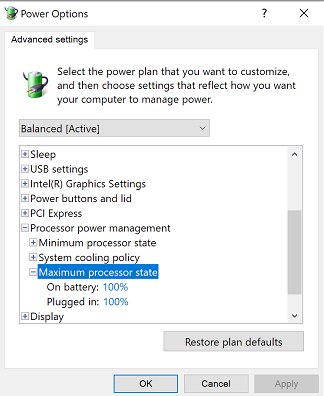UUID stands for Universally Unique Identifier and it is used very extensively to identify information within computer systems.
It comprises of 128 bits and its major use case is to uniquely identify different disk partitions in a computer system.
Here at LinuxAPT, as part of our Server Management Services, we regularly help our Customers to perform Linux related queries.
In this context, we shall look into the different methods of finding the UUIDs in Linux.
1. Finding UUIDs via the "blkid" Command
To use the "blkid" command to find the UUID in Linux Mint 20, you will have to execute it in the manner shown below:
$ sudo blkidThe UUID of the /dev/sda5 partition will be displayed as a result of the above command.
2. Finding UUIDs via the "lsblk" Command
To use the "lsblk" command to find the UUID in Linux Mint 20, you will have to execute it in the manner shown below:
$ sudo lsblk –o PATH,SIZE,RO,TYPE,MOUNTPOINT,UUID,MODELThe UUID of the /dev/sda5 partition will be displayed as a result of the above command.
3. Finding UUIDs via the "ls" Command
To use the "ls" Command to find the UUID in Linux Mint 20, you will have to execute it in the manner shown below:
$ sudo ls –l /dev/disk/by-uuidThe UUID of the /dev/sda5 partition will be displayed as a result of the above command.
[Need urgent assistance in fixing Linux Mint related system errors? We can help you. ]
Conclusion
This article covers the different methods to find out the UUID in a Linux Mint 20 system.
UUID is the "universally unique identifier" that is assigned to devices on a Linux system for the purpose of identification.
For example if your hard disk has 3 partitions then each partition is a device and has a uuid.
Similarly cd/dvd, usb drives etc all are assigned a uuid.
Different methods To identify Disk Partition/FileSystem UUID in Linux:
1. blkid Command: locate/print block device attributes.
2. lsblk Command: lsblk lists information about all available or the specified block devices.
3. hwinfo Command: hwinfo stands for hardware information tool and great utility that used to probe for the hardware present in the system.
4. udevadm Command: udev management tool.
5. tune2fs Command: adjust tunable filesystem parameters on ext2/ext3/ext4 filesystems.
6. dumpe2fs Command: dump ext2/ext3/ext4 filesystem information.
7. Using by-uuid Path: The directory contains UUID and real block device files, UUIDs were symlink with real block device files.
This article covers the different methods to find out the UUID in a Linux Mint 20 system.
UUID is the "universally unique identifier" that is assigned to devices on a Linux system for the purpose of identification.
For example if your hard disk has 3 partitions then each partition is a device and has a uuid.
Similarly cd/dvd, usb drives etc all are assigned a uuid.
Different methods To identify Disk Partition/FileSystem UUID in Linux:
1. blkid Command: locate/print block device attributes.
2. lsblk Command: lsblk lists information about all available or the specified block devices.
3. hwinfo Command: hwinfo stands for hardware information tool and great utility that used to probe for the hardware present in the system.
4. udevadm Command: udev management tool.
5. tune2fs Command: adjust tunable filesystem parameters on ext2/ext3/ext4 filesystems.
6. dumpe2fs Command: dump ext2/ext3/ext4 filesystem information.
7. Using by-uuid Path: The directory contains UUID and real block device files, UUIDs were symlink with real block device files.












